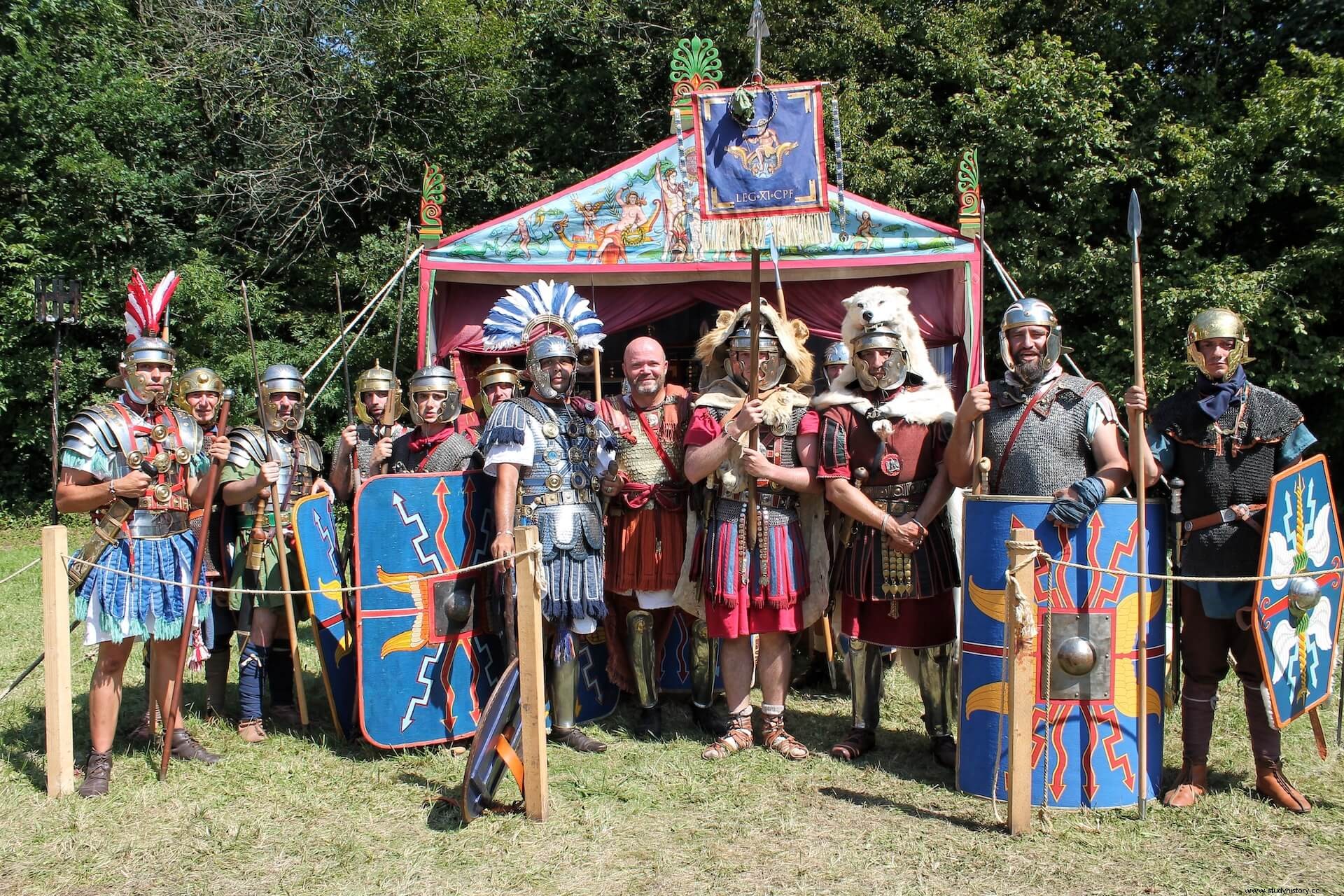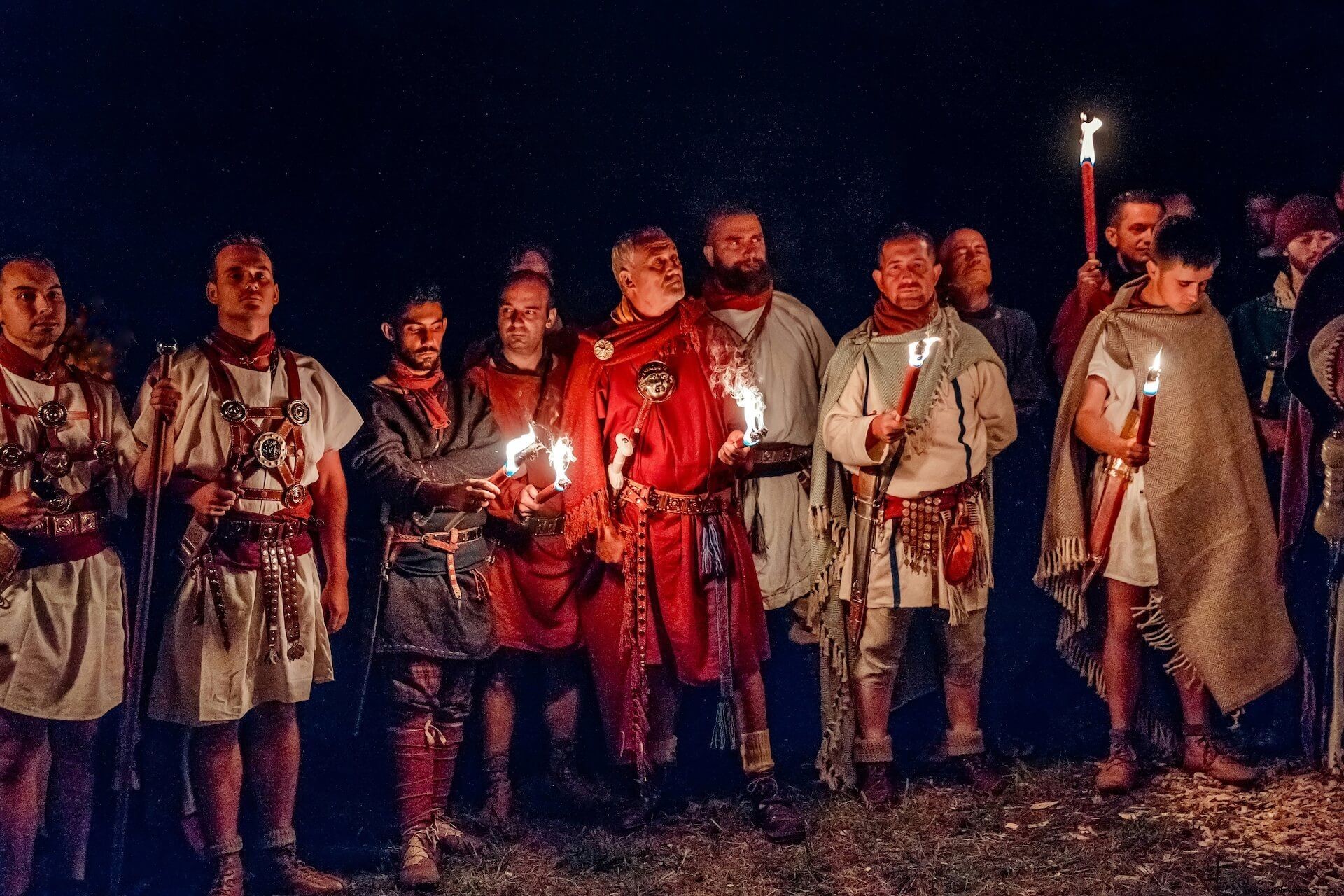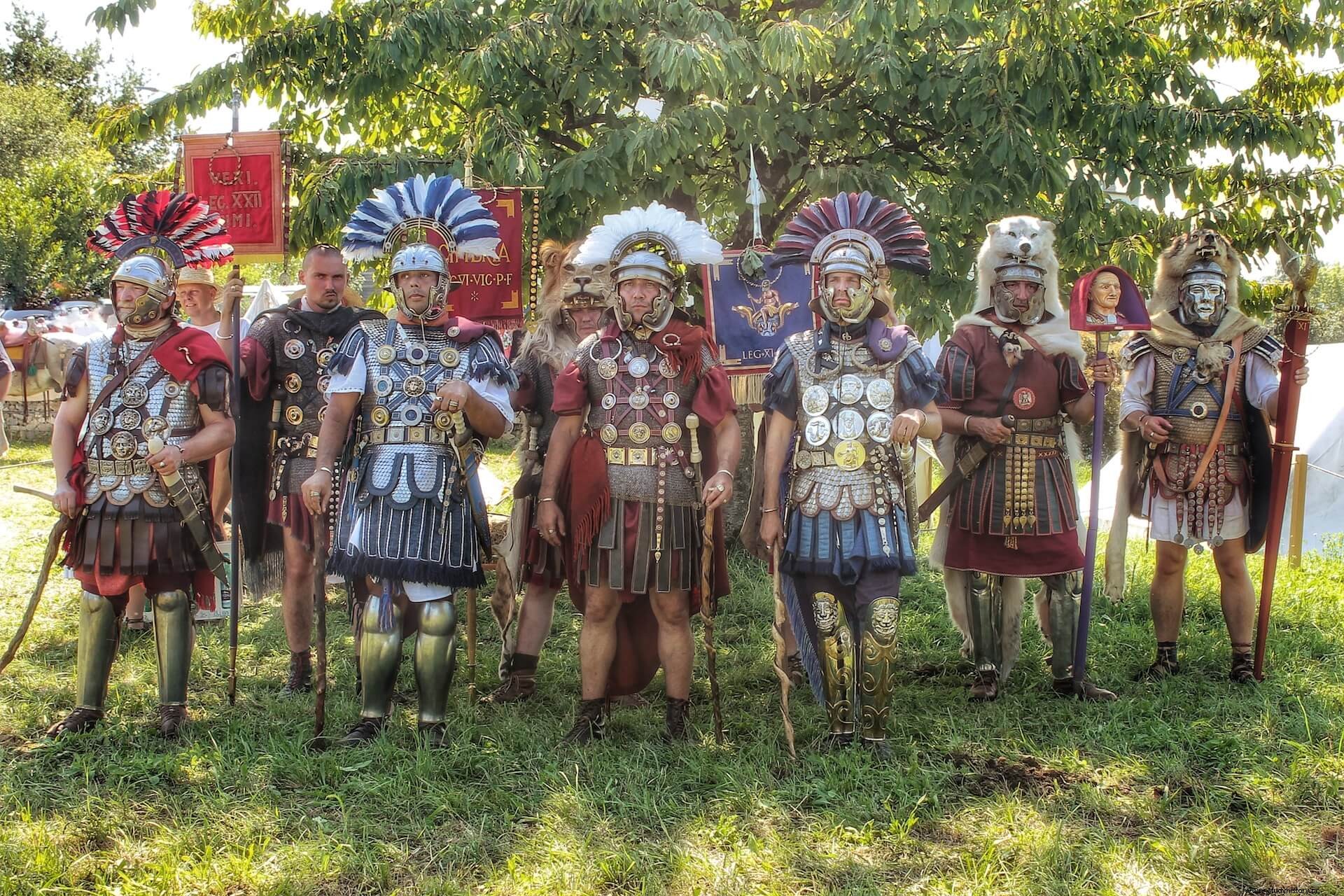
For many years, the group responsible for the part army of Augusta Raurica, the Legio XI CPF of Switzerland, has been in charge of selecting those who, in their opinion, are the best and most serious re-enactors in Europe to participate in a weekend that undoubtedly leaves no one indifferent.
Officially constituted on July 7, 2018, the Legio XI CPF of Spain has worked very hard to be worthy of being able to participate in said event, work that was rewarded with the formal invitation of our brothers from Switzerland to participate in what has been cataloged this year as the best edition of all. For the members of this group, it was the icing on the cake of a year of great effort and work where all our knowledge, training and research would be put to the greatest tests that can be given in the world of historical reenactment.
Our adventure begins in Madrid on Thursday, August 22, with the departure of fourteen members of our group and all the necessary supplies for a 19-hour road trip, tired that it accumulated. Upon our arrival at the event site, on Friday the 23rd at 7:00 in the morning and exhausted from having traveled almost all at once, we had to set up our part of the camp (a command tent and three tents for the troops). Only once everything was ready were we able to rest.

There we meet old acquaintances and many re-enactors that we did not know, belonging to the Legio XI CPF of Siuza, Legio XI CPF of Belgium, Legio XI CPF of Russia, Legio VI of Denmark and Legio XXII of France . This was the first time that all the sister groups of Legio XI CPF met and worked together. We must say that, from the first moment, the affection and camaraderie that was breathed was impressively positive, we must emphasize that the most emotional part of this adventure was meeting so many wonderful people.
Augusta Raurica, synonymous with historical accuracy
Soon, those of us present learned the reason for the requirement required to attend the Augusta Raurica military camp. A true military camp with a hundred reenactors where absolutely nothing was allowed that was not historically correct (equipment, personal effects, and furnishings had to be historical and nothing modern could be had on hand), the camp lanes were preceded by tents of the centurions and military commanders and followed by the tents of the legionnaires, each tent had to have a fire lit to prevent the humidity of the place (barely 2 kilometers separated us from the river Rhine) and avoid the smells of having a hundred soldiers there . The food was prepared on the bonfires and the mulsum Roman and other beverages of the time were abundant in the camp. With temperatures that ranged from about 30 degrees with a blazing sun to about 12 degrees at night with humidity, they made them withstand both the daytime heat with the equipment on and the cold and humidity of sleeping in the tents, using straw as insulation. soldiers and officers rugs, just as it would have been 1900 years ago.

At 6:00 in the morning, the cornice gave the touch of reveille and the soldiers had half an hour to line up with their clothing and light equipment and march with their commanders in the lead to run about 15-20 minutes of running and then at 7:00 go to breakfast with the other participants of the event at the site bar.
At 8:00 an inspection order was given where the officers, led by the Praefectvs Castrorvm They checked the cleanliness and appearance of the soldiers and the non-commissioned officers made sure that there was nothing out of date and that the camp was in perfect condition. Once the inspection was over, the cry of "AD ARMA" was given and the troops formed up again on the main road, this time with all their heavy equipment and weapons, marching to a surrounding meadow to train under the instruction of the five optios led by the oldest, Abianvs, and supervised by several of the officers. We must say that it was incredible to see formations of more than eighty men, many of whom had never seen each other perform complex movements at first and with spectacular synchronization and professionalism, undoubtedly the result of previous hard work that had been done. In a matter of a few minutes, that formation was cohesive and ready to appear as a Roman century reinforced with auxiliary units.

The training sessions lasted until mid-morning where the troops had lunch then, before the influx of a large number of public, make a military parade preceded by the speech of the commander who, riding a horse, made an acclamatio to the men of him in Latin. The military parade ran through the entire event venue to end up in a meadow, where the previously trained maneuvers and tactics were carried out in front of the public at a temperature of about 30 degrees. Even so, all the men who were there (and our dear women, taking photos of everything) behaved in a totally stoic way where fighting and training in such a weather situation was seen as a triumph.
At 2:00 p.m. the military demonstrations for the public ended and the troops returned to their tents to rest for a short hour, since at 3:00 p.m. many of them were claimed in the Roman amphitheater as a guard for the re-enactor Valerio Bello who embodied his role as Emperor Hadrian, presiding over, along with his imperial entourage, the gladiatorial combats and ancient dances that were held there.
While all this was happening, a total of four legionnaires stood guard in the camp, being relieved every two hours by another four new legionnaires and thus maintaining a permanent 24-hour guard where he guarded the entrance gate, the banner pavilion, and the camp tracks as if it were a real military compound.
The sunset gave way to the soldiers to rest, bathe in a small river near the camp or in the two portable showers that were several hundred meters away, as well how to visit the rest of the event. The Augusta Raurica event itself offers fun and history for the whole family, from attractions for young children to classical poetry recitals, ceremonies, gladiatorial combat and public stalls from some of the best Roman craftsmen such as Erik and Ira Konig or Replikate.

Nightfall and with a huge thank you from of the legionnaires, gladiators and dancers rewarded the exhausting military day with dances and combats where the laughter and jokes of the soldiers merged with the torches that illuminated the shows, after these moments of relaxation, various military ceremonies were given way and religious, proceeded to a blessing of the Roman standards and a collective decoration, after that and in rigorous Latin, a libation was made by the priests and in the presence of the emperor, and then proceed to the very grateful words of the commander , thanking everyone for their efforts and the decorations and individual awards of fáleras and torques. It should be noted that the Legio XI CPF of Spain were awarded the centurio , the optio , the vexillifer and one of the veteran legionnaires, where more than one tear was shed.
While the ceremony was over and the soldiers, exhausted, began to go into their tents to rest (some spent a few more minutes of camaraderie with a glass of wine in front of the bonfires), The camp was silent, where only the footsteps of the guards and the noise of the burning fires resounded, waiting for activity to return at dawn.
Augusta Raurica could be told many moments and experiences, but it is true that there have been some so special and emotional that I think words would fall short to define them, which was a fact is that in the first edition of said event with Spanish participation and despite many of us being new to an event like this, we knew how to measure up and set the Hispanic flag high. When the event officially ended on Sunday at 5:00 p.m. and the entire camp began to dismantle, the applause, hugs and exchanges of Facebook profiles flooded the reenactors who, little by little and with their loaded gear, began to leave the place. For the Spaniards, the return began on Sunday at 10:00 p.m. and after almost 22 hours of return we were able to rest in Madrid, with some arriving home (Galician and Granadans) on Tuesday.

As we said, Augusta Raurica leaves no one indifferent, it is a tough test where it is not only about having a faithfully correct appearance and equipment, but about being a true soldier during its duration with all the hardships that that entails and for a lover of history, who works hard to create and preserve a character as realistic as possible to what we know of the past, see how the sweat drains from her and her equipment burns while she trains and fights with dozens of comrades knowing that no one is going to save her from suffering and then curl up on her pallet and Trying to shelter from the cold and humidity with the dim light of a lamp as a companion are details that should remind us of the austerity and rigor of history and the respect that re-enactors must have for it and for those we intend to honor.
